2nd NFFA-Europe Summer School
Nanoscience Foundries and Fine Analysis (NFFA), available instruments and techniques
Basovizza, Trieste - Italy | July 9-13, 2018 | Seminar room T1 Elettra Sincrotrone
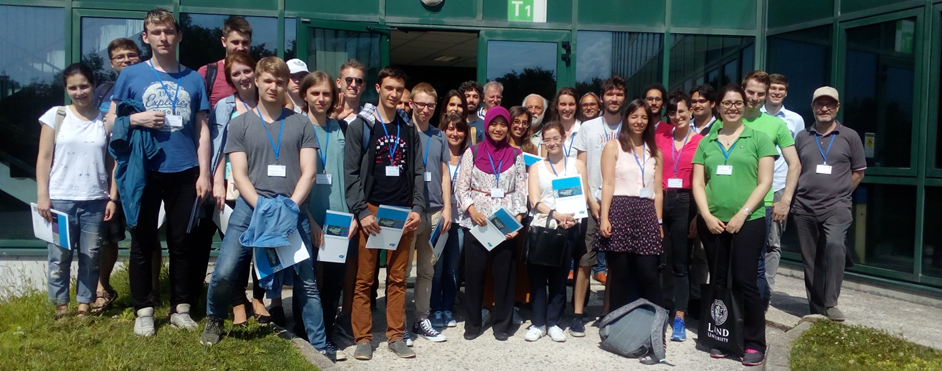
PRUAB-UAB is glad to announce the second edition of NFFA-Europe Summer School devoted to "Nanoscience Foundries and Fine Analysis (NFFA), available instruments and techniques" that will follow the 2016 edition held in Barcelona.
The school is one of the training activities organized by NFFA-Europe, a Research and Innovation Action under the H2020 Work Programme. It is open to graduate students, post-docs and young researchers, but including technicians, engineers and in general to all scientists from academic and industrial communities interested in acquiring knowledge and hands-on experience of the NFFA-Europe instruments and techniques, emphasizing the possibilities and synergies of combining Nanotechnology and Fine Analysis techniques.
This second edition of the NFFA-Europe Summer School is organizing in Trieste (Basovizza and Miramare) and will be devoted to growth techniques, to characterisation methods with selected focus on neutron scattering, microscopy and time-resolved spectroscopy, and to data management methods for compliance with FAIR criteria and EOSC goals
Every topic will be developed in a one-day format with introductory lectures (30-45 minutes plus discussion, or multiples), lectures on specific applications/methodologies, visits and/or tutorials. A poster session will be organized to allow students and participants to share their results and stimulate discussion.
The school aims at promoting the use of instruments and the knowledge of techniques available within the NFFA-Europe consortium through the research topics given by top-scientists involved in the NFFA-Europe consortium from all Europe:
- Complex Growth techniques for “quantum materials”
- Scientific Data Management
- Neutron methods for surface and nanostructured systems
- Microscopy and Spectroscopy at the nanoscale: Scanning Probes and Synchrotron radiation
- Time-resolved optical and electron Spectroscopies : Pulsed source and Free electron lasers
The NFFA-Europe school is organized as follows:
- Each topic will be covered by 4-5 lectures and some practical work.
- Visits will be made to see first-hand all the relevant infrastructures at Triestre available for NFFA-trans-national access (lab-tours): Elettra-Synchrotron, FERMI-Free electron laser Radiation, specific labs at IOM-CNR (Istituto Officina dei Materiali), Supercomputer at SISSA (International School for Advanced Studies).
- Poster sessions: participants will have the opportunity to widely discuss with lecturers and colleagues through two-scheduled poster sessions (including a best poster award).
Programme
Description of the Programme
The first day
The first day will be devoted to the growth of “quantum materials” that are at the core of much effort in nanoscience and that can be synthesised in ultrathin film, or even in nanowire, configurations that allow to add quantum confinement to the features of these materials that display peculiar behaviours as a consequence of electron correlation (metal oxides, perovskites), spin-orbit effects (Rashba materials) and topology (topological insulators). 2D-3D aspects are reflected in their electronic properties and multiple phases that are displayed as a function of strain or applied fields (multiferroics). The study of the electronic, transport, magnetic, ferroelectric and superconducting properties require advanced spectroscopy, diffraction and microscopy to be carried out on clean surfaces and this requires the availability in-situ cleavage of oriented bulk samples or as-grown film shaped samples for fine analysis by in situ microscopy and spectroscopies with synchrotron radiation or neutron radiation. Growth techniques based on Molecular Beam Epitaxy and Pulsed Laser Deposition in-situ or UHV transferred into fine analysis spectrometers, diffractometers and scanning probe apparatuses. Lectures are presented on MBE on Semiconductors as a function of dimensionality (3D-2D-1D) by Dr. Silvia Rubini from CNR-IOM (Italy), on MBE of metal oxides and perovskites by Dr. Alexandr Petrov from CNR-IOM (Italy), and on in-situ PLD of topological insulators and oxides by Dr. Pasquale Orgiani from CNR-IOM (Italy). In the afternoon a lecture on high resolution Transmission Electron Microscopy (TEM, STEM) of these classes of materials by Dr. Regina Ciancio from CNR-IOM (Italy), and a lecture on the in-situ fabrication of simple devices for in-operando fine analysis by Dr. Piero Torelli from CNR-IOM (Italy), will precede a laboratory tour of the MBE and PLD facilities at IOM-TASC and NFFA-APE beamlines or of the TEM laboratory at IOM will complete the programme of Day-1.
The second day
The second day will be fully dedicated to the state-of-the-art issue of advanced scientific data management. It will be held at the premises of the SISSA school for advanced studies in Miramare (Trieste) and will feature lectures on FAIR (findable accessible interoperable and retrievable) data and compliance with the prescriptions of the European Open Science Cloud (EOSC), and on the IDRP (Information and Data Repository Platform) by Dr. Stefano Cozzini from CNR-IOM and DEMOCRITOS (Italy), followed by tutorials and exercises on the implementation and use of the IDRP by Dr. Rossella Aversa from CNR-IOM (Italy).
The third day
The third day will include the poster session of the school with two time slots in the morning and during the midday break. The participants of the school will present their research results and projects.
The module on Neutron Methods, on Day-3, is structured to provide students with a general introduction to neutron interaction with matter and the fundamentals of neutron scattering. This topic will be covered by Dr. Francesco Sacchetti, Emeritus of the University of Perugia. Then the focus will be on polarization techniques, spanning from production, analysis and some application examples possibly taken from on grazing-incidence small-angle neutron scattering with a lecture by Dr. Werner Schweika of JCNS-Jülich (Germany). In the afternoon two more lectures on Neutron Reflectometry by Dr. Stefan Mattauch also from JCNS- Jülich (Germany), and on Imaging and Cold Neutron Imaging by Dr. Friedrich Ott from Lab. Léon Brillouin CEA/CNRS (France). By this choice of lectures, we would like to emphasize the impact that novel neutron scattering techniques and sources can have on in-situ and in-operando surface studies and nanostructured systems, and the advantages of a synergetic multi-techniques approach like that pursued under NFFA.
The fourth day
The fourth day will be dedicated to scanning probe methods for surface microscopy and local spectroscopy of quantum materials, and to synchrotron radiation methods applied to X-microscopy and spectro-microscopy completed by a lecture on in-situ nanofabrication of samples for in-operando spectroscopy application on quantum materials (multiferroics). An introductory lecture on scanning tunnelling microscopy will be given by Dr. Cristina Africh, from CNR-IOM (Italy), followed by a lecture on Scanning Tunnelling Spectroscopy presented by Dr. Mirco Panighel from CNR-IOM (Italy). A lecture on the relevant properties of synchrotron radiation for the study of nano (quantum) materials will be given by Dr. Giancarlo Panaccione, from CNR-IOM (Italy). A lectures on synchrotron radiation based infrared microscopy and nanoscopy will be presented by Dr. Lisa Vaccari from Elettra-Sincrotrone Trieste (Italy) and a lecture on spectro-microscopy with soft x-rays will be presented by Dr. Andrea Locatelli from Elettra Sincrotrone Trieste. Day-4 will be completed by a site visit on the microscopy beamlines of Elettra.
The fifth day
The fifth day presents time-resolved optical and electron spectroscopies with an introduction to the ultrashort pulsed sources in the UV-Soft X rays from high harmonic generation of lasers and free electron lasers that are at the basis of pump-probe methods and with lectures on photoelectron based methods and photon-in photon-out methods applied to the study of phase transitions in ferromagnetic metal surfaces and in quantum materials. One lecture on laser based ultrashort pulses will be presented by Dr. Riccardo Cucini from CNR-IOM followed by one lecture on time resolved electron spectroscopy by Dr. Tommaso Pincelli from Università degli Studi di Milano (Italy) and a lecture on time resolved optical spectroscopy by Dr. Martina Dell’Angela from CNR-IOM (Italy). One lecture on Free Electron Lasers will be presented by Dr. Claudio Masciovecchio from Elettra-Sincrotrone Trieste (Italy).
A laboratory tour of the FERMI@Elettra FEL will follow, completing the science programme of Day-5.
The closing session will feature a discussion of the opportunities for young researchers as users or collaborators of NFFA-Europe and the presentation of the “best poster” award.
School organisers
- Nuria Barniol, UAB, nuria.barniol@uab.cat
- Francesc Torres, UAB, francesc.torres@uab.cat
- Elisabetta Travaglia, CNR-IOM, travaglia@iom.cnr.it
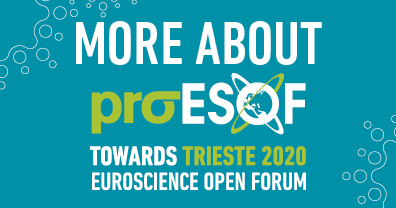
Lecturers

Silvia Rubini, IOM-CNR, Italy.
Lecture: Molecular beam epitaxy of compound semiconductors.
Silvia Rubini got her Master Degree in Pavia (Italy) in 1987 and her Ph.D. degree in 1992 at the Lausanne Federal Institute of Technology (EPFL) in Lausanne (Switzerland). Since 1995 she works with the Material Division at TASC INFM National Laboratory (now Istituto Officina dei Materiali, part of Italian National Research Council, CNR), since 1997 she is CNR staff scientist, and since 1999 she is in charge of the molecular beam epitaxy (MBE) laboratory. Since 2006 she is Faculty member of the PhD School in Nanotechnology of the University of Trieste. Her research activity has been mainly devoted to the growth and characterization of semiconductor compounds heterostructures, both III-V and II-VI materials, for electronic and optoelectronic applications. In the last ten years her attention has been mainly directed to the growth and the physics of semiconductor compounds nanowires. She is the author of more than 140 publications, and she has been the supervisor of Ph.D. and Master students.
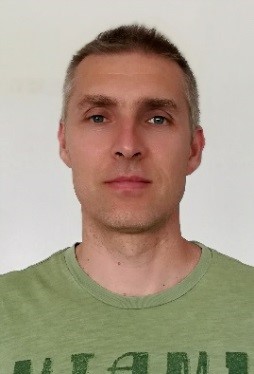
Aleksandr Petrov, IOM-CNR, Italy.
Lecture: MBE metal oxides.
Aleksandr Petrov is the research associate at IOM-CNR (Trieste) where he is working with Molecular Beam Epitaxy (MBE), developing the system and methods for application in oxide thin films and multilayers growth. Aleksandr has worked in BSUIR and Salerno universities and has more than 10 years’ experience with MBE. Current research activity concentrates on the interface and surface engineering in perovskites grown by MBE and its physics.
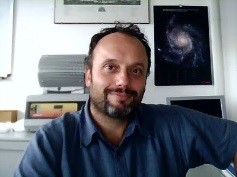
Pasquale Orgiani, IOM-CNR, Italy.
Lecture: Pulsed Laser Deposition enabling Direct-ARPES experiments on thin films and heterostructures.
Pasquale Orgiani took his bachelor degree in Physics at the University of Naples (1999) and the Ph.D. in Microsystems Engineering at the University of Roma Tor Vergata (2002). He is staff scientist at CNR (National Research Council) in the field of deposition of complex materials and heterostructures in form of thin films and the investigation of their electronic and structural properties. His research activity is focused on the role of structural properties (mainly strain induced on the thin films by different substrates during the epitaxial growth) on their electronic properties (e.g. metal-insulator transition, quantum interference effects at low temperatures, and so on). Over the last years, he has been appointed in charge of the thin film PLD facility directly connected to the APE-beamline dedicated to surface science (i.e. ARPES, XPS and XAS) at synchrotron ELETTRA. Such a system, operative since 2015, is currently part of the available techniques within the NFFA-EU and NFFA-Trieste projects which offer an open-access program for nano-science and fine analysis.
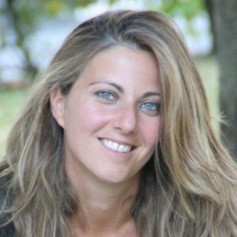
Regina Ciancio, IOM-CNR, Italy.
Lecture: Transmission Electron Microscopy and Applications.
Regina Ciancio took her Bachelor degree in Physics in 2003 at the University of Salerno where she also achieved her PhD in Physics in 2007. She is Staff Research Scientist at CNR-IOM in Trieste (Italy) and her research activity is focused on the nanostructural characterization of materials system by electron microscopies and related spectroscopies with a special focus on strongly correlated materials systems, mostly functional oxides, grown both as single crystals and thin films. She is Head of the Electron Microscopy laboratories of the CNR-IOM that are parts of the integrated access offer within the NFFA-Europe and NFFA-Trieste projects. Regina Ciancio is also in the management Board of NFFA-Europe as Project peer-review and science communication manager. She is Science editor of the NFFA-Europe website, acts also as contact person and reference for the Access Review Panel of the NFFA-Europe proposals.
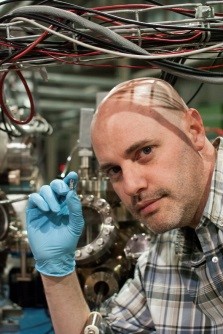
Piero Torelli, IOM-CNR, Italy.
Lecture: Fabrication of simple devices and characterization with synchrotron radiation.
He graduated in physics at the Modena University in 1998 and got his PhD in solid state physics at the Univeriste’ of Paris XI in 2002. After a period of 5 years in which he was appointed of a fixed term researcher position at the National Institute of physics of matter at the S3 research center of Modena he moved to TASC laboratory in Trieste where he occupy a permanent researcher position at the IOM institute of CNR. Since 2010 he is in charge of supervising the activities of the APE-High Energy beamline. Among the different scientific subjects he has approached during the course of his career (which spans from magnetism to optics and catalisys) some key words like: synchrotron radiation, electronic spectroscopies and low dimensional systems (e.g. thin films, interfaces and nanosized clusters) have always occupied a central role in his research. He is author of hundred paper and have been scientific responsible of several post doc and co-supervisor of 2 PhD students.
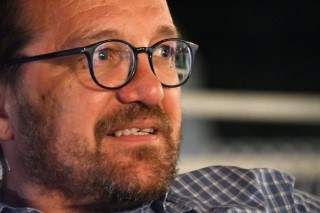
Stefano Cozzini , IOM-CNR, Italy.
Lecture: lntroduction to Scientific Data Management, FAIR and EOSC Compliance
Stefano Cozzini is a development scientist at CNR/IOM with more than 20 years’ experience in the area of scientific computing and HPC/Data e-infrastructures. He is currently coordinating the Data management research activities of two European Projects (NFFA-EUROPE and EUSMI). He is actively involved in of the Master in High Performance Computing promoted by SISSA and ICTP (www.mhpc.it) and in the recently launched master degree on “data science and scientific computing” master at University of Trieste. He has considerable experience in leading HPC and data infrastructure projects at national and international level.
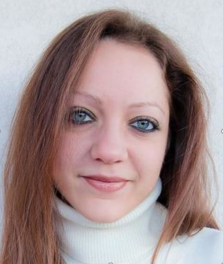
Rossella Aversa , IOM-CNR, Italy.
Lecture: Tutorial on how to use IDRP
Rossella Aversa graduated in 2011 in Astrophysics and Cosmology at the University of Bologna, and received the PhD in Astrophysics in 2015 at SISSA (Trieste). She attended the Master in High Performance Computing (MHPC) in Trieste, and graduated in 2016 discussing her thesis on scientific image processing within the NFFA-Europe data repository. In 2016 she got a postdoc position at the CNR-IOM in Trieste. Since then, she has been involved in the NFFA-Europe project.
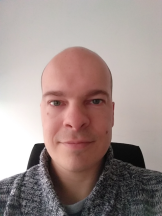
Thomas Jejkal, Karlsruhe Institute of technology, Germany.
Lecture: lntroduction to IDRP (Information and Data Repository Platform).
Thomas Jejkal studied Information Technology at Baden-Württemberg Cooperative State University until 2004. After receiving his Bachelor degree, he was employed at Karlsruhe Institute of Technology (KIT) where he started working in the field of distributed computing as part of the German Grid initiative. Since 2010, Thomas Jejkal is focusing on the research topic of Big Data and research data repositories. In this context, he is committed within the Research Data Alliance where he was leading a working group on research data repository interoperability. Within the NFFA project he is one of the responsible for building up an e-infrastructure for data and information management in nanoscience.
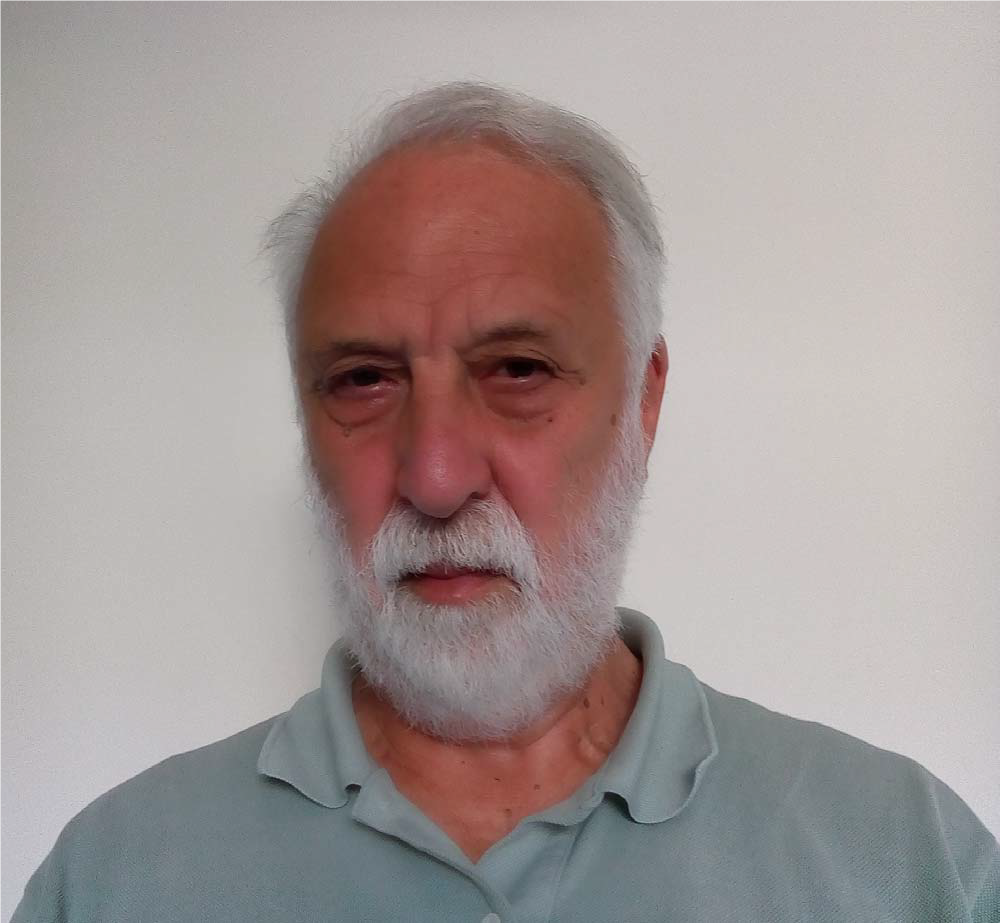
Francesco Sacchetti, University of Perugia, Italy.
Lecture: Fundamentals of the interaction of Neutrons with Matter. (Neutron scattering Theory)
Degree in Physics (Laurea), University of Rome Sapienza (1970). Researcher at the TRIGA Reactor, Casaccia (Rome) (1970-76). Visiting fellow at Metallurgy Division, AERE Harwell (UK) (1974). Researcher of Istituto di Elettronica dello Stato Solido, CNR, Rome (1976-1983). Associated Professor of Mathematical Methods for Physics, Physics Department, University of Perugia (1983-1986). Full Professor of Solid State Physics, Physics Department, University of Perugia (1987-2016). Emeritus, Physics and Geology Department, University of Perugia (from 2017). Francesco Sacchetti has a long experience concerning the neutron scattering experiments in several fields as magnetic scattering with polarised neutrons, phonons in crystals and inelastic scattering in liquid and amorphous. This long continuous experience, lasting almost 50 years, was performed using different instrumentation for neutron scattering at different facilities. The experimental work was also performed using x-ray scattering often in synergy with neutron scattering and with the help of theoretical approaches. Francesco. Sacchetti was involved in several projects to develop neutron instrumentation, starting from the PRISMA spectrometer at ISIS (UK, 1984) to the BRISP spectrometer at ILL (France, 2000). In addition he was involved in several EU projects, starting from FP3 until the recent FP7. These projects were devoted to different scientific activities and to the development of new techniques in neutron scattering, including the recent Preparatory Phase of the European Spallation Source, which is being built in Lund (Sweden). He was involved in the development of neutron scattering in Italy and in all the collaboration with other countries like UK, France and Germany

Werner Schweika, Forschungszentrum Jülich GmbH, Germany.
Lecture: Neutron Polarisation Analysis and Techniques
Werner Schweika graduated at Bochum University in 1980 and received his PhD degree at the Aachen University in 1984, working in the field of disordered alloys, neutron scattering and Monte Carlo simulations. In 1997 he habilitated in experimental and theoretical physics at Aachen University, spent a visiting professorship in the University Athens, Georgia, and since then he is a lecturer in physics at Aachen University. He is employed as a senior scientist at the Research Centre Jülich developing instruments for neutron scattering and methods for neutron polarization analysis. In 2012 he became part of the Neutron Instrument Division at the European Spallation Source in Lund being responsible for the diffraction instruments. His research is related to disorder phenomena in condensed matter in a rather wide sense and comprises fields such as highly frustrated magnetism, spin correlations and excitations, dynamic disorder effects in thermoelectric materials, ferromagnetism in semi-conductors and surface induced order and disorder phenomena.
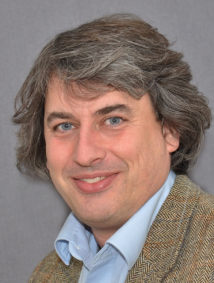
Stefan Mattauch, Jülich Centre for Neutron Science - Germany.
Lecture: Neutron Reflectometry: Neutron Methods for surface and nanostructure systems
Diploma in physics Institute of Crystallography at the RWTH Aachen in 1996. Research semester at the Groupe Matiére Condensée et Matériaux at the University of Rennes I (1996-97). Research assistant at the Institute of Crystallography at the RWTH-Aachen (1997-2000). Dean-Assistant of the faculty ‘Mining, Geology and MuW’ (FB5) of the RWTH-Aachen (2000-2002). Doctoral degree in physics (December 2002): “Investigation of the structural phase transitions and domain development of the ferroic model compounds RbH2PO4 and RbD2PO4“, Borchers Badge of the RWTH-Aachen 2003. Instrument responsible of the 4-circle diffractometer (SV28) at the research reactor DIDO (FJ-2) in Jülich, Germany (2002-2004). 1st instrument responsible for the magnetic reflectometer MARIA of the JCNS (Jülich Centre for Neutron Science) at the FRM II, Germany, since 2004. Member of the SANS and Reflectometry Subcommittee (Cremlin WP4) since 2013.
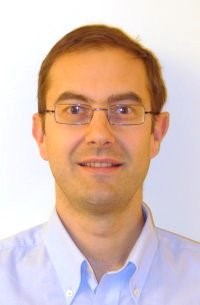
Frederic Ott., Lab. Léon Brillouin CEA/CNRS , France.
Lecture: Imaging and Cold Neutron Imaging
Frédéric has been working in the field of neutron scattering for 20 years. His main topic of interest are magnetic nanostructures. He has been building and operating the polarized neutron reflectometer PRISM at the LLB for the study of magnetic thin films. He is currently working on magnetic nanoparticles composite materials for permanent magnets and performing studies in SANS and micromagnetic simulations. In parallel he has setup the radio-tomography station IMAGINE at the LLB in 2014 on which a very broad spectrum of material science studies are being performed.
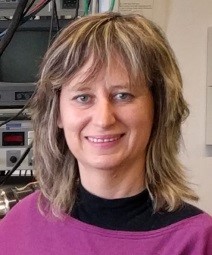
Cristina Africh, IOM-CNR - Trieste, Italy.
Lecture: Scanning probe microscopy: basics and overview on possible applications
Cristina Africh is a permanent scientist at CNR-IOM in Trieste (Italy). She is expert in the use of scanning tunneling microscopy (STM) at the state of the art level for the study of surface structures and processes. In particular, she is interested in the in-operando investigation of the kinetics of surface chemical reactions and growth processes, by acquisition of STM movies with atomic resolution in reactive environment and up to video frame-rate. Her recent research focuses on the study of graphene, grown via low-pressure CVD on metallic substrates, clarifying its growth mechanisms as well as its morphology, electronic structure and chemical activity.
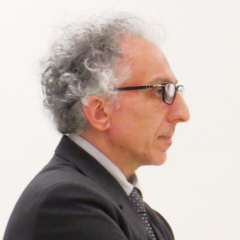
Giancarlo Panaccione, IOM-CNR - Trieste, Italy.
Lecture: Synchrotron Radiation Properties and Nanoscience
From October 1998: Senior Researcher at Lab. TASC-IOM (CNR). The research activity of Dr. Panaccione is mostly devoted to the exploitation of Synchrotron Radiation spectroscopies for the study of correlated systems and novel quantum materials, following three main axes: (1) electronic and magnetic properties of low dimensional systems (surfaces and interfaces), (2) electron confinement, and (3) complex oxides. Recent selected publication T. Pincelli, T. et al. Nat. Commun 8, 16051 (2017); G. Panaccione, Phys. Rev. Lett. 97, 116401 (2006); P. K. Das et al, Nat. Commun. 7, 10847 (2016); D. Di Sante et al. Phys. Rev. Lett. 119, 026403 (2017); P.K. Das et al.,Phys. Rev. Materials 2, 065001 (2018); B. Gobaut et al. ACS Appl-Mat. Interfaces 9, 23099 (2017).
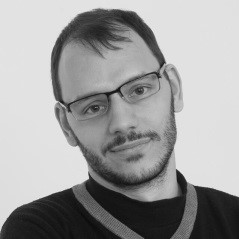
Mirco Panighel, IOM-CNR - Trieste, Italy.
Lecture: Scanning Probe Spectroscopy
After the Master degree in Physics, I obtained my PhD in Nanotechnology in 2015 at University of Trieste with a thesis on STM and synchrotron light investigation of organic molecules on metal surfaces. Then I spent 2 years in the group of Dr. A. Mugarza at ICN2 (Barcelona) performing STM/STS measurements in cryogenic conditions. Since 2017 I joined Dr. C. Africh group at CNR-IOM where I am responsible for STM and Fast STM measurements.
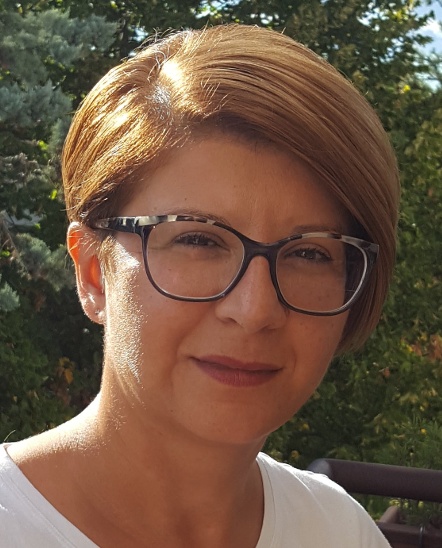
Lisa Vaccari, Elettra Sincrotrone - Trieste, Italy.
Lecture: IR Microscopy and Nanoscopy with Synchrotron
Dr. Lisa Vaccari got MSC in Chemistry at Trieste University discussing a thesis on bio-crystallography in 1999. From 1999 to 2006 she worked in the micro and nano-fabrication group, LILIT laboratory at INFM, Trieste, designing, developing and fabricating devices for interdisciplinary applications. In 2005 she got her PhD in Pharmaceutical Science for the development of nanostructured carriers for delivery of anticancer agents in colon adenocarcinoma therapy. Since October 2006 she is scientist at Infrared beamline at Elettra – Sincrotrone Trieste, SISSI, of which she is responsible from 2011. Dr. Lisa Vaccari coordinates the user and in-house research activities of the Life Sceinces branchline of SISSI, deciated to FTIR microspectroscopy and imaging in the Mid-IR regime for several applications: medicine, biology, biochemistry, chemistry, cultural heritage, forensic science and others. Her current in-house research activity focuses on FTIR microspectroscopy of live cell under physiological conditions with the aim to develop new in vitro label-free live single-cell based assays, on the complementation of FTIR microspectroscopy with diverse analytical techniques (AFM, micro-XRF, flow-cyrometry, …) for biological system characterization and on IR plasmonics for ultra dilute analyte detection. She is coauthor or more than 60 scientific papers and contributed to several book-chapters.
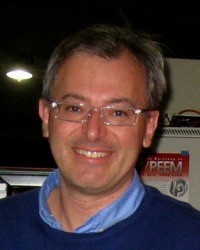
Andrea Locatelli, Elettra Sincrotrone - Trieste, Italy.
Lecture: Spectromicroscopy with Synchrotron Radiation
Andrea Locatelli studied physics at the University of Trieste, where he took his Diploma in 1994 with a thesis on adsorption site determination by means of x-ray photoelectron diffraction. He then moved to Cambridge, U.K., where he obtained a Ph.D. in Chemical Physics, after contributing to the development of a cryogenic interferometer for surface IR emission studies. He is currently employed at the Elettra synchrotron, where he is in charge of the Nanospectroscopy beamline. His scientific interests span from surface catalytic reactions to self-organization processes, from 2-dimensional materials to thin film magnetism, which he studies with varied synchrotron based spectroscopies and low energy electron microscopy.
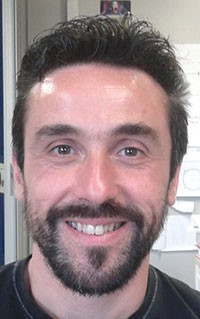
Riccardo Cucini, CNR-IOM - Trieste, Italy.
Lecture: Pulsed Lasers Sources
Riccardo Cucini received his degree in Physics in 2005 from University of Firenze, Italy. In 2009, he earned his Ph.D degree in Materials Science and Engineering from University of Firenze, performing the research at the European Laboratory for Non-linear Spectroscopy (LENS). He was a postdoctoral researcher at Elettra Sincrotrone Trieste, working on the planning and installation of the Free Electron Laser beamline TIMER. After a Research Fellow at the Quantum Optics laboratory at University of Nova Gorica in 2014, he worked on the LDM beamline at the Free Electron Laser FERMI in Trieste. Currently, he is the operative responsible at SPRINT lab (CNR-IOM) for generation of high harmonics and ultrafast spectroscopy and for time resolved non-linear experiments. His research interests focus on time resolved spectroscopy based on table-top laser and free electron laser sources. His research activity includes four wave mixing experiments on liquids and confined liquids, impulsive stimulated Raman scattering at EUV wavelength, generation of high harmonics at high repetition rate for application to time-spin resolved photoemission spectroscopy.
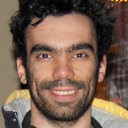
Tommaso Pincelli, Università degli Studi di Milano - Italy.
Lecture: Time-resolved electron spectroscopies
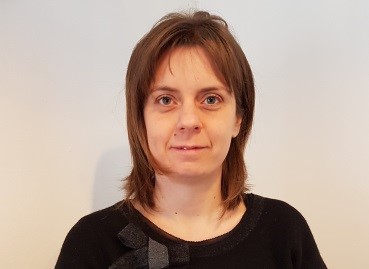
Martina Dell'Angela, IOM-CNR - Trieste, Italy.
Lecture: Time-resolved soft X ray spectroscopy on organic films
Martina Dell'Angela received a PhD in physics at University of Trieste, Italy (2009). She worked at ALOISA beamline of Elettra synchrotron (Trieste, Italy) studying the self-assembly on metal substrates of organic molecules relevant for electronics. Subsequently she has been post Doc at University of Hamburg/CFEL in the group of prof. Wilfried Wurth. She studied with time-resolved X-ray techniques ultrafast chemical reactions. She has been Post Doc in the group of Prof. Fulvio Parmigiani at the FERMI free electron laser. She build the RIXSFERMi endstation and performed time resolved M-edge RIXS experiments. Currently she is researcher at ‘Istituto Officina Dei Materiali’ (IOM) of the Italian National Research Council (CNR). She applies time resolved spectroscopies with synchrotrons and X-ray lasers to the study of reactions on surfaces and of photovoltaic materials.
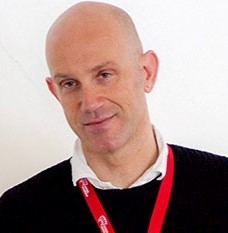
Claudio Masciovecchio, Elettra Sincrotrone - Trieste, Italy.
Lecture: Science Frontiers at FERMI. Free Electron Lasers
Ph.D in Physics at the University of Grenoble (1988). Postdoc at the European Synchrotron (Grenoble, France), (1998-1999). Senior Scientist at Elettra (Trieste, Italy), (1999-2015). Head of the Scientific Program of FERMI Free Electron Laser (Trieste, Italy) (2015). Awards: 2012 - Kai Siegbahn Prize (Uppsala, Sweden); 2015-Innovation Award on Synchrotron Radiation (Berlin, Germany); 2016–Outstanding Scientist Award (Bari, Italy). Expertise: dynamics of disordered systems like: liquids, supercooled liquids, glasses and polymers; bio-related materials; samples in extreme thermodynamic conditions; surface science; Free Electron Laser related science (Nonlinear Optics, Four Wave Mixing, and Coherent Diffraction Imaging). Publications and Dissemination: 140 articles in reviewed journals, 3 invited reviews and articles, Over 100 invited talks and plenary lectures at International Conferences, Symposia, Workshops
Poster sessions
Participants are invited to present a poster related to their work and the framework of the NFFA-Europe project items.
Important note: sending a poster proposal is mandatory for students that apply for a travel support
Lodging
Registration fee
The registration fee includes: coffee breaks and lunches.
Deadline: 30 June 2018
Please notice that school attendance will be limited to 40 students and the participation will be assessed on a first-come/first-serve basis, subjected to acceptance from the Organizing Committee.
Student travel support
Students can apply for free registration and travel support (plane ticket and accommodation) before the 15th of June 2018. The allocation and amount (up to 400€) will be proportionally allocated to a maximum of 20 students on a first come first served basis. The support will never exceed the actual costs incurred.
Important note: sending a poster proposal and a letter from the students’ supervisor is mandatory for all applicants.
Further information and instruction will be sent regarding award of student travel support. For questions or additional information please contact: p.nffa.ee@uab.cat

